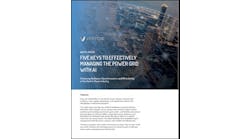I have to agree with the Tea Party; the US government should not choose the light bulbs I use in my home. And fortunately, it does not.
Yet that’s the spin being pushed by those who want to roll back federal lighting performance standards. An odd mythology is developing around the standards.
Opponents claim that the standards amount to government picking and choosing winners and forcing them upon us. More specifically, they say that the feds have banned the incandescent light bulb, which has been around since Thomas Edison’s time.
This is not true; the incandescent light bulb is not being banned; the standards are agnostic about technology type as long as they perform as required. The 2007 law is meant to act as a market mechanism that encourages innovation. With a benchmark to work towards, scientists, engineers and product designers are working to displace older, inefficient devices. Already several different kind of light bulbs have made their way into the marketplace, including a new and better incandescent.
We have efficiency standards not only for light bulbs, but also for refrigerators, water heaters, air conditioners, microwaves and other appliances. They are nothing new. Those who see them as government intrusion may be surprised to find that the first US appliance standards were set under Ronald Reagan.
Still one might ask, do we really need appliance standards? Are they worth the bother? That’s a $300 billion question – the amount the American Council for an Energy Efficient Economy estimates the US will save on electricity costs by 2030 through existing appliance and lighting standards.
Here are other important points about appliance standards made by Steven Nadel, ACEEE’s executive director, in a testimony on March 10 before the US Senate’s Energy and Natural Resource Committee. Nadel urged that Congress reject S. 395, the Better Use of Light Bulbs Act (BULB), which would repeal lighting standards set in 2007 under the Bush administration.
- Appliance standards generated 340,000 net jobs in the U.S. in 2010.
- The majority of the standards are based on consensus agreements between manufacturers and energy efficiency advocates.
- Four types of bulbs already meet the standards, although the standards do not take effect until 2012. Two are incandescent bulbs.
- The 2007 lighting standards, alone, are expected to reduce annual electricity use by 72 billion kWh by 2020, enough to serve the annual electricity needs of 6.6 million average households and avoid construction of about 30 power plants.
- ACEEE forecasts that the lighting standards will reduce consumer energy bills by more than $7 billion by 2020, or about $50 per American household annually.
- A recent USA Today survey of 1,016 adults found that despite misinformation circulated about a light bulb ban, 61% of Americans favor the 2007 lighting standards, while 31% say they are bad.






